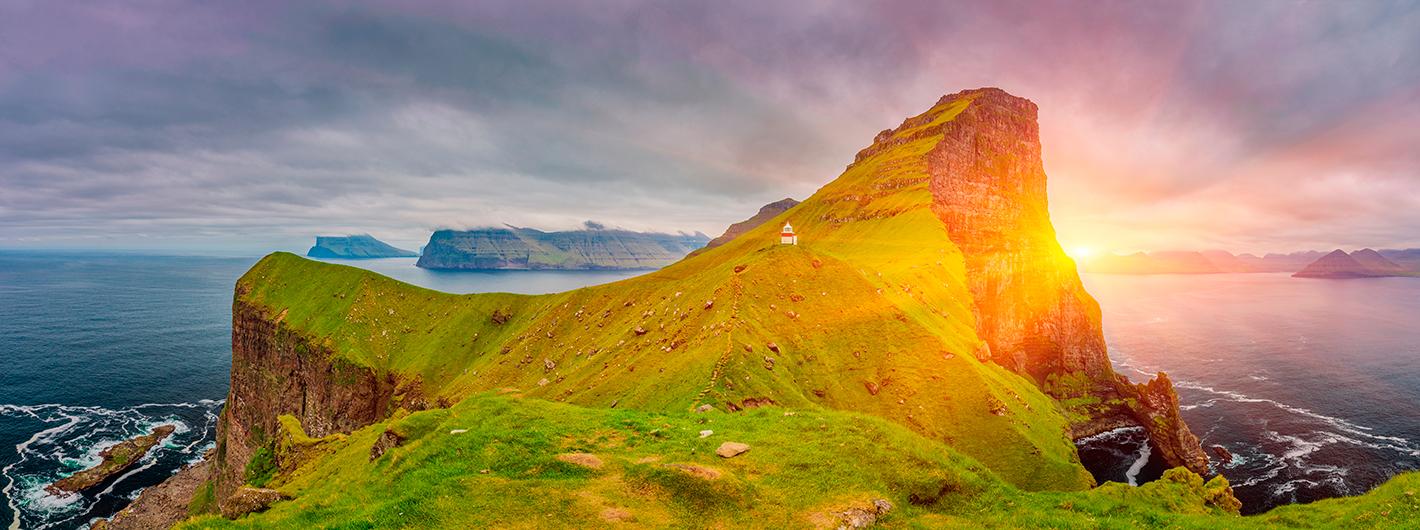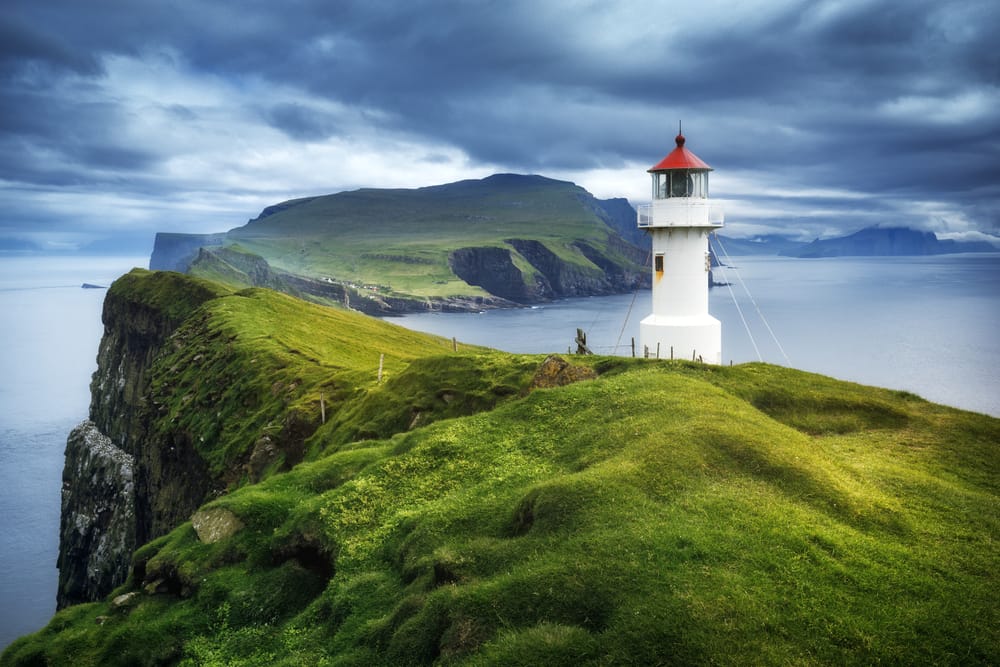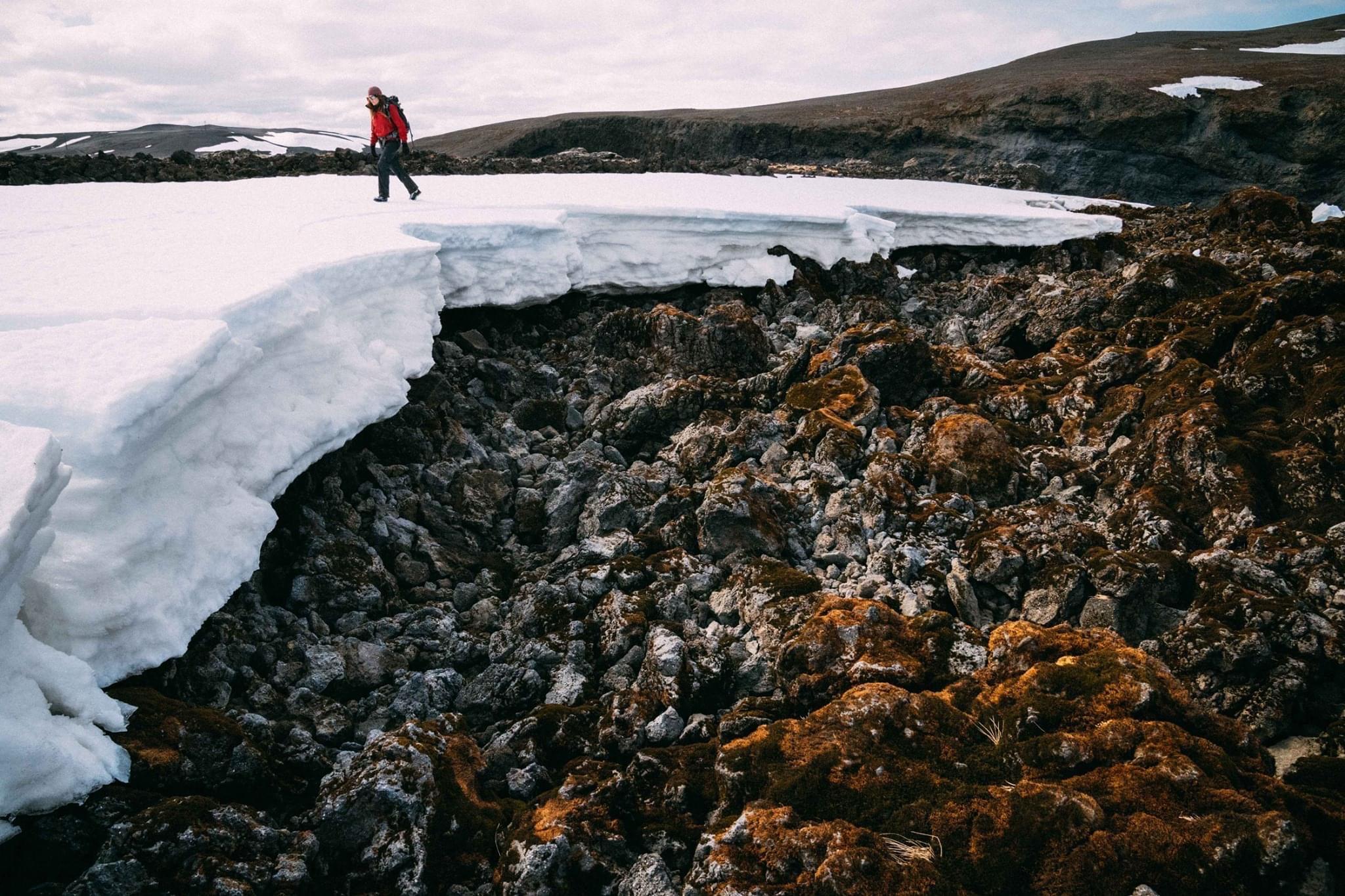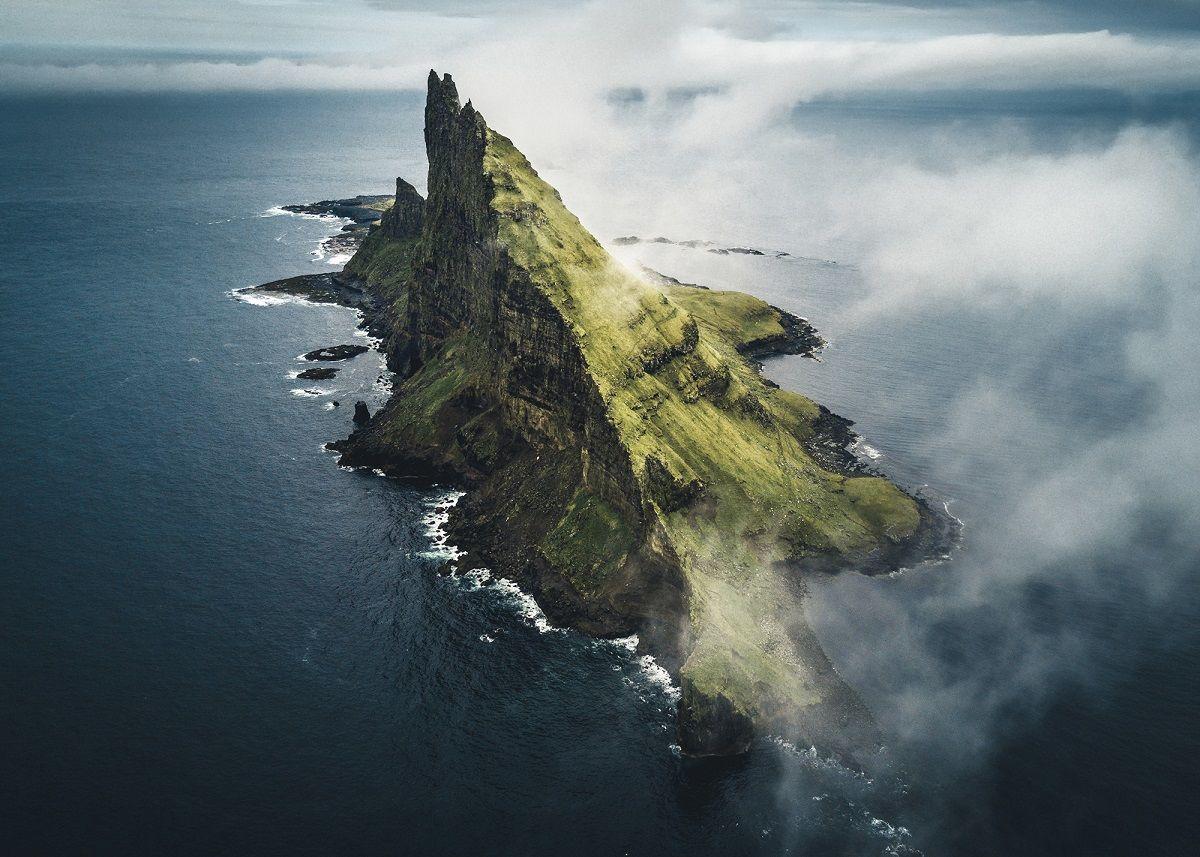Hiking in the Faroe Islands. Where to go?
The Faroe Islands are a geological layer composed mainly of basalt, the same rock that Greenland is made of, which originated with the magmatic plume that originated Iceland, an area of intense volcanic activity where magma constantly rises to the surface to form a Cortex. This geological phenomenon, together with the action of the sea, has shaped the cliffs of the Faroe Islands for years, creating landscapes that escape our imagination. Ready to discover the best hiking routes in the Faroe Islands?
Hiking to the Mykines lighthouse
One of the most famous lighthouses in the Faroe Islands is undoubtedly the one on the island of Mykines. Located in the west of the archipelago, this island of only 10km2 is the favorite place for flocks of puffins. From Mykines you can access Mykineshólmur, another islet connected to Mykines via a bridge.
In the past, three families lived in Mykineshólmur. His task was to tend the lighthouse. During WWII, this was a dangerous and exposed occupation because German planes often attacked the lighthouse. On the slope, about 200 meters from the lighthouse, are the remains of the old shelters that the families used during the bombings. In 1970, the lighthouse was fully automated and the last people stayed in this era.
Hiking distance: From 7 to 8 km.
Difficulty: Moderate
Duration: Approx. two and a half hours (round trip)
Kallur. The world’s ending lighthouse
If there is a place that amazes us, it is Kallur. Starting from the small town of Trøllanes, a path ascends to the north of the island, which brings us closer to one of the most incredible and vertical views of all the Faroe Islands. This is the Kallur Lighthouse. The hike itself is suitable for everyone, especially compared to other hikes in the Faroe Islands, with a grass trail. Climatic conditions, however, present the greatest risk; Strong winds at the top of the hike are treacherous and can impede access to the lighthouse and edges, while a day with heavy fog can make the route inaccessible.
Hiking distance: 2 to 3 km.
Difficulty: Moderate
Duration: Approx. two hours (round trip)
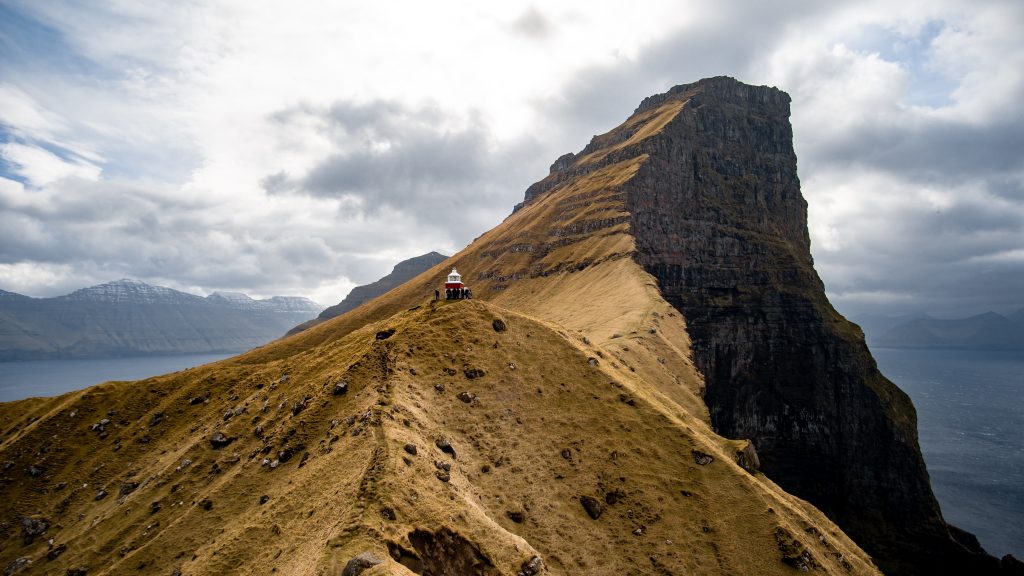
Trælanípa. The lake over the sea
Almost certainly one of the most photographed places that appears the most on Instagram are the views of Lake Sørvágsvatn from the “Cliff of the Slaves”, one of the jewels of trekking in Faroe.
Trælanípa is a perpendicular rock wall, jutting 142 meters up from the sea. Supposedly, it got its name from Viking times when slaves were thrown from the mountain.
During most of the trek, the trail runs on flat terrain with only moderate changes in elevation. The path crosses some streams, but they are easy to cross stepping on stones. It is impossible to get lost, the path runs parallel to the eastern shore of the lake.
Hiking distance: 6 km (round trip).
Difficulty: Easy
Duration: Approx. 3 hours (round trip)
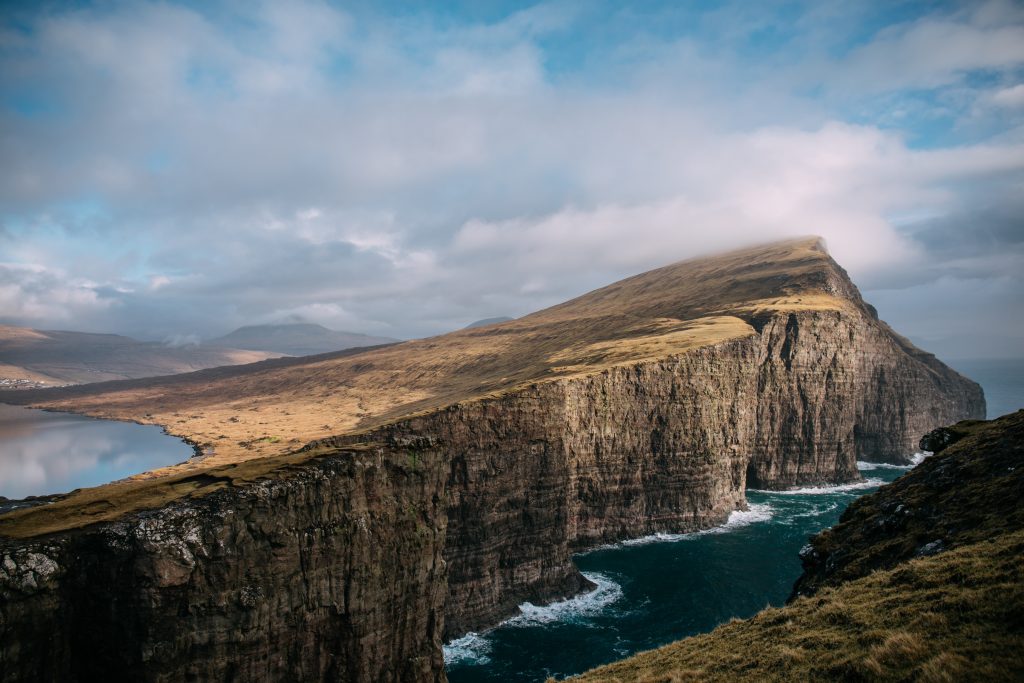
Gásadalur & Mulafossur. An amazing waterfall
Gásadalur is one of the most photogenic places for photography and trekking in the Faroe Islands, but in recent years it has undergone many changes. Throughout its existence, it was only accessible by boat, on foot or by helicopter. Currently, a tunnel that crosses the mountain brings us closer to the small town.
But if on the contrary, you want to go on a trek from the town of Bøur, here are our tips!
From Vagar airport, we take the road to Sørvágur, and continue to the town of Bøur. A little further on this path, we will reach the tunnel that goes through the mountain. The path starts just before this tunnel.
The road to Gásadalur is more dangerous than any other section of the hiking trail. Steep, curvy roads, and almost exclusively on loose, slippery mud and rocks. Once you arrive in Gasadalur feel entitled to wear a happy expression on your face to show everyone who arrived by vehicle, that you arrived in Gásadalur … in the old school way!
Hiking distance: 8 km (round trip).
Difficulty: Moderate
Duration: Approx. 3-5 hours (round trip)
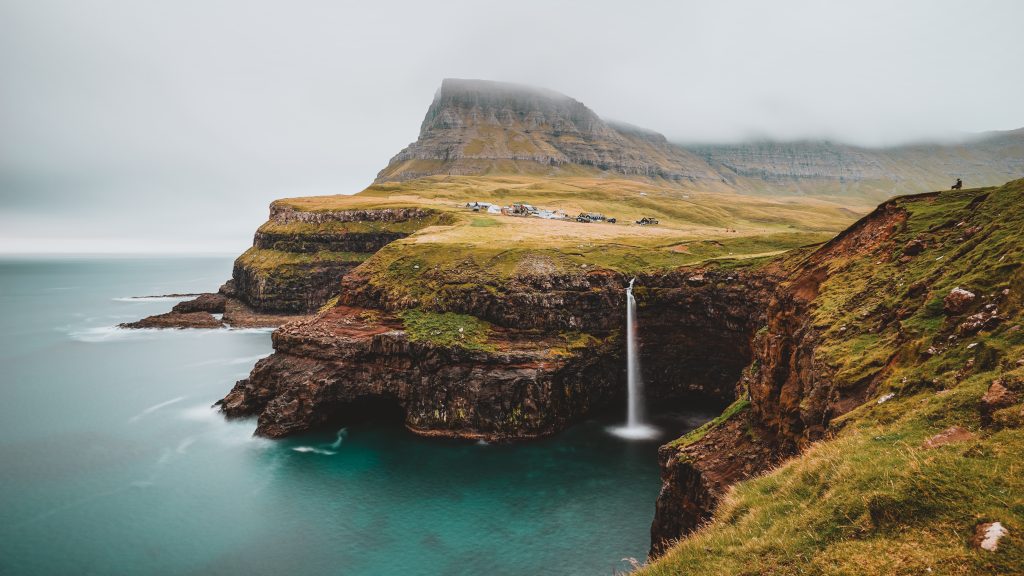
Drangarnir
Drangarnir is the name of two rock formations that rise out of the sea, between Vágar Island and the islet of Tindhólmur, which resembles a crocodile’s back about to devour its prey. The name of the largest formation is Stóri Drangur and the smallest is Lítli Drangur.
IMPORTANT: Before 2018, you could trek to Drangarnir on your own, but now this has changed, it is necessary to join a tour and do the trek with a local guide.
The first part of the trek runs next to the fjord. We crossed some streams walking on stones and we passed several sheep shelters. After about 3 km, we pass the village Bøur on the other side of Sørvágsfjørður.
We cross a stream and begin to leave the fjord as the route enters a beautiful green valley.
Upon reaching the top of the hill, we are rewarded with a fabulous panoramic view of Drangarnir, Tindhólmur and Mykines in the background.
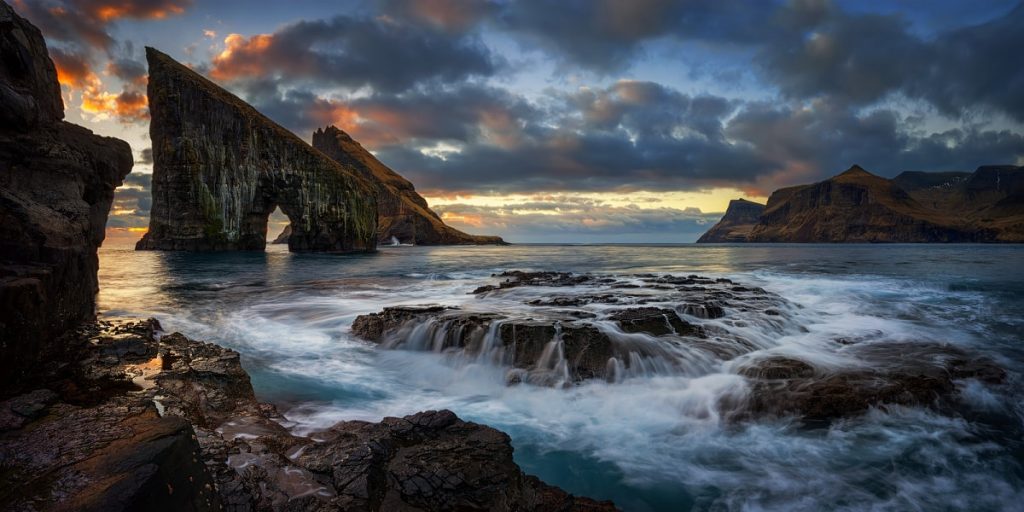
We visit all these places on our routes through the Faroe Islands.
